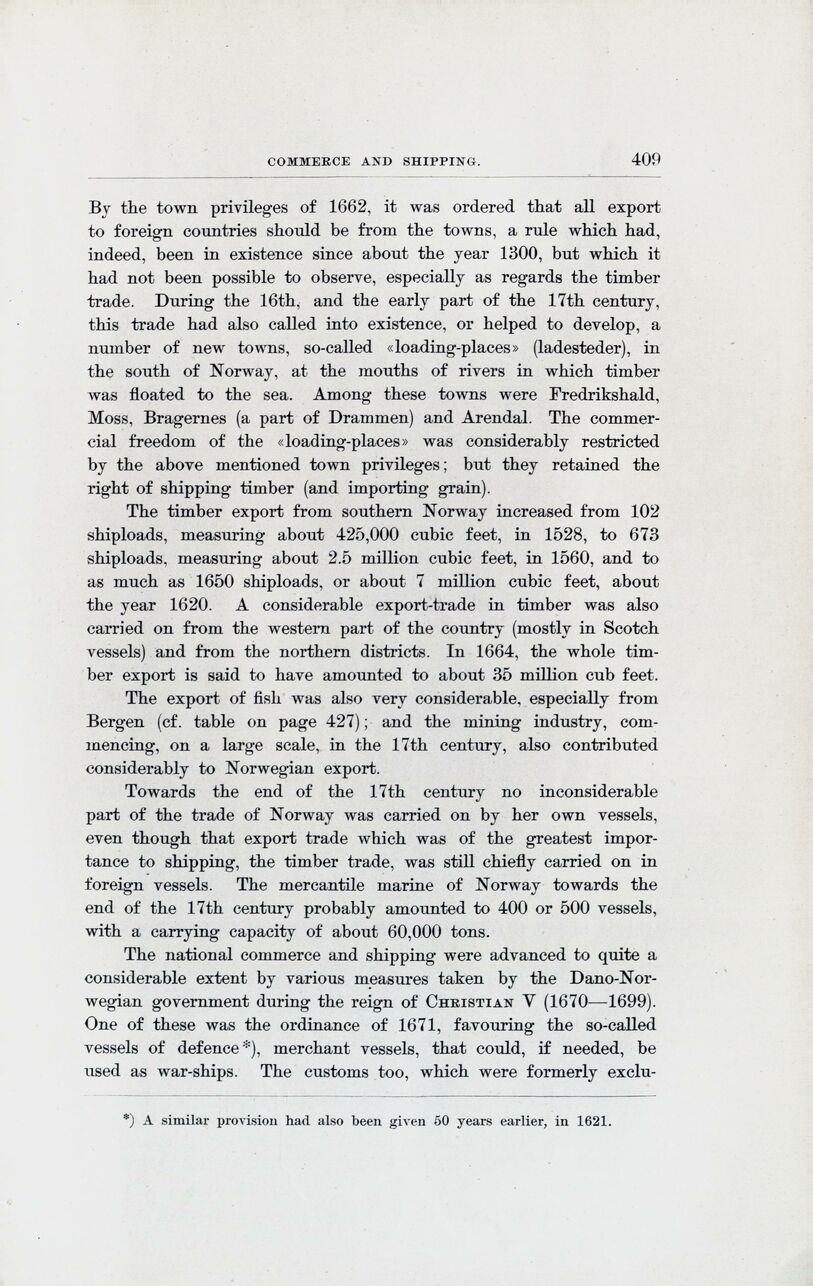
Full resolution (JPEG) - On this page / på denna sida - Commerce and Shipping, by A. Th. Klær

<< prev. page << föreg. sida << >> nästa sida >> next page >>
Below is the raw OCR text
from the above scanned image.
Do you see an error? Proofread the page now!
Här nedan syns maskintolkade texten från faksimilbilden ovan.
Ser du något fel? Korrekturläs sidan nu!
This page has been proofread at least once.
(diff)
(history)
Denna sida har korrekturlästs minst en gång.
(skillnad)
(historik)
By the town privileges of 1662, it was ordered that all export
to foreign countries should be from the towns, a rule which had,
indeed, been in existence since about the year 1300, but which it
had not been possible to observe, especially as regards the timber
trade. During the 16th, and the early part of the 17th century,
this trade had also called into existence, or helped to develop, a
number of new towns, so-called «loading-places» (ladesteder), in
the south of Norway, at the mouths of rivers in which timber
was floated to the sea. Among these towns were Fredrikshald,
Moss, Bragernes (a part of Drammen) and Arendal. The
commercial freedom of the «loading-places» was considerably restricted
by the above mentioned town privileges; but they retained the
right of shipping timber (and importing grain).
The timber export from southern Norway increased from 102
shiploads, measuring about 425,000 cubic feet, in 1528, to 673
shiploads, measuring about 2.5 million cubic feet, in 1560, and to
as much as 1650 shiploads, or about 7 million cubic feet, about
the year 1620. A considerable export-trade in timber was also
carried on from the western part of the country (mostly in Scotch
vessels) and from the northern districts. In 1664, the whole
timber export is said to have amounted to about 35 million cub feet.
The export of fish was also very considerable, especially from
Bergen (cf. table on page 427); and the mining industry,
commencing, on a large scale, in the 17th century, also contributed
considerably to Norwegian export.
Towards the end of the 17th century no inconsiderable
part of the trade of Norway was carried on by her own vessels,
even though that export trade which was of the greatest
importance to shipping, the timber trade, was still chiefly carried on in
foreign vessels. The mercantile marine of Norway towards the
end of the 17th century probably amounted to 400 or 500 vessels,
with a carrying capacity of about 60,000 tons.
The national commerce and shipping were advanced to quite a
considerable extent by various measures taken by the
Dano-Norwegian government during the reign of Christian V (1670—1699).
One of these was the ordinance of 1671, favouring the so-called
vessels of defence [1], merchant vessels, that could, if needed, be
used as war-ships. The customs too, which were formerly
<< prev. page << föreg. sida << >> nästa sida >> next page >>